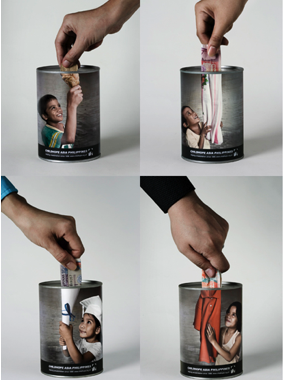Click the player below to listen or right-click and save for the MP3.
 I spoke with iStockphoto to learn how it lobbied for and justified its new micro-donations platform to give customers and employees an easy way to contribute to the causes they care about. I expected an hour-long conversation on how executives made the business case for social good. It turns out, they barely needed to. Users of the site (mainly contributing photographers) asked for a way to give back, employees formed volunteer committees to launch social cause initiatives and top-level executives saw the case for social good and approved half a million dollars in a matched donation to user-voted charities. Even sweeter was the advice that iStock got from Benevity Social Ventures, the company behind the micro-donations software. “We had to learn how philanthropy should work in business, and Benevity helped us with this,” says Kelly Thompson, iStock’s COO.
I spoke with iStockphoto to learn how it lobbied for and justified its new micro-donations platform to give customers and employees an easy way to contribute to the causes they care about. I expected an hour-long conversation on how executives made the business case for social good. It turns out, they barely needed to. Users of the site (mainly contributing photographers) asked for a way to give back, employees formed volunteer committees to launch social cause initiatives and top-level executives saw the case for social good and approved half a million dollars in a matched donation to user-voted charities. Even sweeter was the advice that iStock got from Benevity Social Ventures, the company behind the micro-donations software. “We had to learn how philanthropy should work in business, and Benevity helped us with this,” says Kelly Thompson, iStock’s COO.
The partnership will be rolled out in phases, from a $500,000 matched contribution from iStock, to enabling contributors to allocate royalties to specific organizations to allowing customers to make a donation at the point of purchase. The final piece to come at the end of 2010 is a workplace giving program.
The program was nearly textbook-easy because three key stakeholder groups–customers, employees and management–shared the same mission to turn iStock into a vehicle for making a social difference.
- Contributors wanted a way to give back. Many of them are making good profits from the photographs they sell on iStock. Kelly explained that the challenge in giving contributors an easy way to give back was global diversity. Eighty thousand contributors from every country made it a challenge to find a social program that was relatable to and accessible by everyone. iStock is keeping the program in its customers’ hands by letting them decide which organizations will receive portions of the $500,000 donation.
- Employees had formed volunteer groups earlier on to try out social programs on the site. They did this because they cared, not because of any memos of company guidelines. It’s an excellent case of intrapreneurial success. While past programs were shorter-term, the ability for contributors and clients to make millions of small donations through iStock will be a continuous source of support for nonprofit organizations.
- Moved by other companies’ successful social missions and by their own customer and employee interests, iStock’s parent company Getty Images supported the program by the end of Kelly’s pitch. “Together we looked at the numbers and we were able to make a matching donation of $500,000, so we decided to do it,” he says. He’s positive about the outcome. “When we launched, people thought we were crazy to process such small transactions, but we’ve seen how quickly they can grow.” He expects the same impact from microdonations made by iStock’s global community.
Listen to my conversation with Kelly to hear what he and others learned about philanthropy in a business what the biggest barrier to the program was.
Was this a perfect storm or should it always be this easy?





 I'm Olivia Khalili. I created Cause Capitalism to show you how to grow your business by incorporating a social mission.
I'm Olivia Khalili. I created Cause Capitalism to show you how to grow your business by incorporating a social mission. 

Trackbacks/Pingbacks
[…] recently that are marketed as plug-and-play philanthropy for retail sites (Benevity is another that iStock Photo is working with). Some are better than others, but as a whole, because they are set up as for-profit companies they […]
[…] that aims to simplify and incentivize mobile giving. Software company Benevity (I’ve profiled iStock Photo’s use of the Benevity platform to power micro-donations) partnered with mobile payment provider Obopay to create a service with […]